TRANCIATI AFRICANI

afromosia
| Trade Names: | Afromosia, Kokrodua, Assamela, Gold Teak. |
| Similar Woods: | Teak. |
| Origin: | West Africa, between the Congo and the Ivory Coast. |
| Range: | In the lower tropical rain forests, generally in groups. |
| Uses: | As veneer for inferior purposes. Not used in Central Europe as face veneer. Serves as substitute for Teak in furniture making and used in the USA for interior boat fixtures and fittings. |
| Properties: | Similar to Oak, moist wood stains when coming into contact with ferrous metals. |
| Machining: | It work well but with a tendency to pick up the interlocking grain. Low feed speed should be used. |
| Seasoning: | Drying is slow with minimal shrinkage and good shape stability. |
| Finishing: | DD paint or open pore varnishes for exteriors surfaces. NC paint is recommended for interior use. The wood should be surface treated to prevent staining as a result of reaction with iron. |
| Jointing: | Because of its application, water-proof glues are always used, causing no problem. Screw and nail joints must be pre-drilled. |
afromosia

amazaquè
| Trade Names: | Ovankgol , Daniela |
| Similar Woods: | Teak |
| Botanical Name: | Guibourtia ethie |
| Family: | Leguminosae |
| Origin: | Ivory coast, Ghana, Southern Nigeria and Gabon. |
| Uses: | Fine furniture and cabinetwork, turnery, decorative veneers, flooring. A walnut like wood. Yields a gum copal used in pharmaceuticals and as a base for varnishes. |
| Properties: | Heartwood yellow brown to dark brown with gray to almost black stripes; sapwood yellow white, about 4 in wide, clearly demarcated. Texture moderately coarse, grain straight to interlocked; attractive figure, unpleasant odour when freshly cut. |
| Machining: | Saws slowly but well for its density, works fairly easily with hand and machine tools, planes to a good finish, must be heated before slicing unto veneers. May stain when in contact with metal. |
amazaquè

bubinga
| Trade Names: | Bubinga, Kevazingo. |
| Similar Woods: | Mutenye, Libenge, Etimoe. |
| Origin: | Africa. |
| Range: | West Africa from Liberia East Nigeria through Gabon to Zaire, drier regions in the lower tropical rain forests. Trees up to 45 m tall with conspicuously high roots. Differentiation is made between plain striped and pommele Bubinga wood, latter of which is considered the most valuable at present. |
| Uses: | Higher quality architectural woodwork and mass-produced furniture, paneling and parquet flooring. Well-suited also for musical instruments. |
| Properties: | Brown to violet-red heartwood with conspicuous growth zones. Resin pockets can occur, these degrade both the veneer and lumber. To achieve the required grain Bubinga is either true quarter cut (rather plain) or rotary vut eccentrically (colourful). |
| Machining: | Despite its great hardness this wood is relatively easy to work. However, carbide-tipped tools should be used. |
| Seasoning: | The wood should be carefully and slowly dried to avoid splitting. When moist, the wood gets a blue stain when coming into contact with metal. |
| Finishing: | The wood is suitable for any type of varnish or polish treatment. |
| Jointing: | No special considerations are necessary and glue joints can be easily produced. It is essential to pre-drill screw joints because of the hardness of this wood. |
bubinga

bubinga pomelè
| Trade Names: | Bubinga, Kevazingo. |
| Similar Woods: | Mutenye, Libenge, Etimoe. |
| Botanical Name: | “Guibourtia Demeusei”. |
| Origin: | Africa. |
| Range: | West Africa from Liberia East Nigeria through Gabon to Zaire, drier regions in the lower tropical rain forests. Trees up to 45 m tall with conspicuously high roots. |
| Uses: | High quality architectural woodwork. Popular wood for this purpose in the USA, Australia and Japan. |
| Properties: | Due to the unique growing pattern of this tree its wood provides a veneer pattern which is almost figured and, as a result, particularly attractive. |
| Machining: | The growth form of the Sapele has no significant negative effect on machining. Care must be taken that the fibres in the interlocking grain zones do not pick up when machining is done. |
| Seasoning: | The wood should be carefully and slowly dried to avoid splitting. When moist, the wood gets a blue stain when coming into contact with metal. |
bubinga pomelè
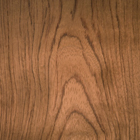
bubinga fiammato - Crown Bubinga
| Trade Names: | Crown Bubinga. |
| Similar Woods: | Mutenye, Libenge, Etimoe. |
| Origin: | Africa. |
| Range: | West Africa from Liberia East Nigeria through Gabon to Zaire, drier regions in the lower tropical rain forests. Trees up to 45 m tall with conspicuously high roots. Differentiation is made between plain striped and pommele Bubinga wood, latter of which is considered the most valuable at present. |
| Uses: | Higher quality architectural woodwork and mass-produced furniture, paneling and parquet flooring. Well-suited also for musical instruments. |
| Properties: | Brown to violet-red heartwood with conspicuous growth zones. Resin pockets can occur, these degrade both the veneer and lumber. To achieve the required grain Bubinga is either true quarter cut (rather plain) or rotary vut eccentrically (colourful). |
| Machining: | Despite its great hardness this wood is relatively easy to work. However, carbide-tipped tools should be used. |
| Seasoning: | The wood should be carefully and slowly dried to avoid splitting. When moist, the wood gets a blue stain when coming into contact with metal. |
| Finishing: | The wood is suitable for any type of varnish or polish treatment. |
| Jointing: | No special considerations are necessary and glue joints can be easily produced. It is essential to pre-drill screw joints because of the hardness of this wood. |
bubinga fiammato
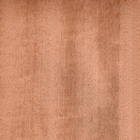
doussie
| Trade Names: | Doussie. |
| Similar Woods: | Bossè. |
| Botanical Name: | “Afzelia spp” Family Leguminosae. |
| Origin: | West, Central and East Africa. |
| Uses: | Exterior joinery (window frames, doors,) flooring, Heavy construction including harbour and dock work, furniture, because of good acid resistance used for vats and tanks. |
| Properties: | Heartwood reddish brown after exposure; sapwood pale straw to whitish, well defined. Texture moderate to coarse; grain straight to interlocked; medium luster; without characteristic odor or taste. Some pores contain a yellow dyestuff which, under moist conditions, can discolour textiles, paper, or other cellulosic materials. |
| Machining: | Rather difficult to saw and machine because of rapid dulling of saw teeth and cutters but works to a smooth finish; some tearing of grain in radial faces. Difficult to stain where pores contain yellow deposits. Classified moderate in wood bending properties. Dust may be irritating. Difficult to glue. |
doussie

ETIMOÈ
| Trade Names: | Etimoè. |
| Similar Woods: | Bubinga, Cupay, Anzem. |
| Origin: | Africa. |
| Range: | West Africa from Guinea through Sierra Leone, Liberia, Ivory Coast, Ghana to Nigeria, lower tropical rain forests. |
| Uses: | Sliced veneer for faces and as rotary veneer for plywood production, furniture, panelling, and parquet flooring. Hardly known in furniture production in Central Europe. Popular decoration wood in Southern Europe (Spain, Italy) |
| Properties: | The color is reddish-brown with darker color zones. The heartwood is durable and resistant to insect attack. |
| Machining: | Working is not made particularly difficult by the resin content. However, carbide-tipped tools should be used. |
| Seasoning: | Drying must be carried out very slowly and carefully to prevent inner tension. |
| Finishing: | The wood permits good surface treatment including polishing. However, the must be pretreated to remove the resin. |
| Jointing: | Surfaces with the resin removed present no difficulties. Pre-drilling screw joints is of advantage to prevent splitting. |
etimoe

FIGURED MAKORE'
| Trade Names: | Figured Makoré, Figured Douka. |
| Similar Woods: | Moabi, Makorè. |
| Botanical Name: | Tieghemella Africana. |
| Origin: | Africa |
| Range: | West Africa from Cameroon through Equatorial Guinea, Gabon and the Congo, lower tropical rain forest. |
| Uses: | Sliced veneer mostly for faces, furniture, panelling, parquet flooring. Only Figured Douka is used for slicing. Plain Douka is not in demand and is used at most as rotary wood for plywood. Douka is to be as a substitute wood for Makoré. |
| Properties: | Makoré is very often figured and frequently striped, wavy, moiré or flamed. The colour ranges from light red to reddish-brown. It must be cut when hot which means careful, intensive cooking is necessary. |
| Machining: | Working presents no special problems but should be carried out at a low feed. Speed due to the interlocked spiral grain. Moreover, tool blades become quickly dull as a result of silicate deposits. |
| Seasoning: | There are no difficulties to seasoning or drying this wood. It must only be carried our slowly and controlled to prevent deformation. |
| Finishing: | Varnishing presents no problem but a filler should be used. |
| Jointing: | The wood glues easily. Screw and nail joints hold firmly. It is advantageous to pre-drilled when using screws. |
FIGURED MAKORE'

koto
| Trade Names: | Koto |
| Similar Woods: | Impa, Ako, Eyong, Obeche (Wawa) |
| Origin: | Africa |
| Range: | West Africa, from Lyberia through to the Ivory Cpast, Ghana, Nigeria and Cameroon. |
| Uses: | Sliced veneer used for door skins and inner surface veneers; rotary veneer used for plywood panels. Used in the furniture industry more as a backing veneer. |
| Properties: | The wood is yellowish-white to cream in color and becomes more yellowish-grey steamed. Koto is very good for printing and staining. Logs must be freshly felled and chemically impregnated. Veneer and lumber (treated) should be stored in dry, well-ventilated rooms. |
| Machining: | Well-sharpened tools are required to produce smooth surfaces due to the interlocking grain. Wet wood tends to become slightly woolly when cut. |
| Seasoning: | The wood must be carefully and slowly dried to avoid surface checking. Drying should take place as soon as possible to avoid blue stain. |
| Finishing: | The wood is excellently suited for staining and polishing when a filler is applied. |
| Jointing: | The wood can be glued very well. Joints are easy to make and hold firmly. |
koto

limba
| Trade Names: | Limba, Afara, Egoin, Frake, Ofram. |
| Similar Woods: | Koto. |
| Origin: | Africa. |
| Range: | Limba is found in the West African rain forests on the Guinea coast. The tree is distributed most frequently in the Congo. |
| Uses: | Limba is a favourite wood for the production of plywood, sliced and peeled veneer. Also used in furniture production, for painted doors and moldings. |
| Properties: | The color varies greatly by region. Limba from the Congo has the desired light yellow color, where as the wood from the Ivory Coast can be brown to black in color. Limba is the dominating species of wood in the Belgian Congo and is exported from there in significant quantities. |
| Machining: | Limba can be easily and cleanly machined by all usual wood working methods. Alternating spiral grain presents no problem with normal feed. |
| Seasoning: | To guard against attack by insects the wood should be kiln-dried soon after cutting and with greatest care due to its inner tension. It must be noted that the dark heartwood takes longer to dry. |
| Finishing: | All types of surface treatment can be applied for interior use. Limba also stains very well. |
| Jointing: | The light Limba wood presents no problem when gluing. Screw joints should be pre-drilled. |
limba

MAKORÈ
| Trade Names: | Makorè, African Cherry, Cherry Mahogany. |
| Similar Woods: | Douka, Moabi. |
| Origin: | Africa. |
| Range: | West Africa from Liberia through the Ivory Coast to Ghana and Nigeria. |
| Uses: | Sliced veneer mostly used as backing and inside veneer in Central Europe. Used also in Southern Europe and North America as face veneer. Solid wood for parquet floors and stairs. Figured Makoré is used for high quality architectural woodwork or musical instruments. |
| Properties: | The heartwood is pink to red-brown and rather resistant to fungi, insect infestation and the weather. Makorè is one of the most sought after redwoods from Africa. Blocks with a great deal of sap and less than 1 m in diameter are hardly suitable for veneer production. |
| Machining: | Straight grain wood can be worked without difficulty. Stellite-tipped saws are required to cut Makoré and reduce tool wear. |
| Seasoning: | Drying should be carried out very carefully at average and constant temperatures. Despite the low shrinkage Makoré is prone to end splitting when drying. |
| Finishing: | Makoré can be treated with all kinds of stains, varnishes and lacquers. Dust extraction should definitely be available, because sanding dust can cause inflammation of mucous membranes and conjunctivae. |
| Jointing: | The wood can be glued well. Screw and nail joints should be pre-drilled. |
makore

moabi
| Trade Names: | Moabi. |
| Similar Woods: | Makorè. |
| Botanical Name: | “Baillonella Toxisperma” Family: Sapotaceae. |
| Origin: | Found in the dense forests of Equatorial Africa. |
| Uses: | Furniture, cabinetwork, decorative flooring, turnery and carving, decorative veneers, joinery, store fittings. |
| Properties: | Heartwood pinkish brown, or a rich red, sapwood pinkish white or gray brown, rather well demarcated. Texture is fine and even; grain straight, sometimes wavy, has an attractive figure; dust may affect mucous membranes. |
| Machining: | Because of silica content there is a rapid dulling of cutters, otherwise works easily; glues and finish well; good steam-bending properties. |
moabi

MOGANO POMELÈ - SAPELI POMELÈ
| Trade Names: | Sapele, Sapelli. |
| Similar Woods: | Douka, Sipo. |
| Origin: | Africa. |
| Range: | West, Central and East Africa, Liberia, Ivory Coast, Ghana, Nigeria, Cameroon, Gabon, Congo, Angola, Zaire, Uganda. |
| Uses: | High quality architectural woodwork. Popular wood for this purpose in the USA, Australia and Japan. |
| Properties: | Due to the unique growing pattern of this tree its wood provides a veneer pattern which is almost figured and, as a result, particularly attractive. |
| Machining: | The growth form of the Sapele has no significant negative effect on machining. Care must be taken that the fibres in the interlocking grain zones do not pick up when machining is done. |
| Seasoning: | Drying should be carried out same as for Sapele. |
| Finishing: | The wood can be stained, varnished and polished well but the resin content has to be considered and must be washed out. Highly polished surfaces are particularly effective. |
| Jointing: | Joints using glue, screws and nails can be produced without any difficulties and are durable. |
mogano pomelè
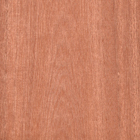
MOGANO SAPELI – SAPELI
| Trade Names: | Sapele |
| Similar Woods: | Tiama, Kosipo, Sipo, African Mahogany. |
| Origin: | Africa. |
| Range: | West, Central and East Africa, Liberia, Ivory Coast, Ghana, Nigeria, Cameroon, Gabon, Congo, Angola, Zaire and Uganda. |
| Uses: | Sliced veneer for faces, furniture, panelling, parquet flooring, doors, pianos and construction lumber. |
| Properties: | Weak pink to dark red heartwood, quickly darkening to a red brown in time. As a rule Aboudikro-Sapele is darker than the wood from other growing areas. Blocks with numerous bark pockets, color defects or pin knots are not suitable for veneer production. There is a heavy demand for narrowly streaked blocks (pencil stripe) with an average diameter of 1 mt. and over. |
| Machining: | Sapele is easily worked with hand machine tools despite of a certain hardness. Only irregular fibre grains make it difficult to produce smooth surface. |
| Seasoning: | Kiln seasoning is difficult because Sapele has a marked tendency to distort when fried too quickly. This is why drying must be carried out very slowly and carefully so that the lumber is not degraded. |
| Finishing: | The wood takes well to stains, varnishes and polishes but the resin exudation must be considered and, if necessary, washed out. |
| Jointing: | No difficulty to produce joints with glue, screws and nails all of which are durable. |
mogano sapeli

MOGANO SAPELI RIGATO – Quarter Sapeli
| Trade Names: | Quarter Sapeli |
| Similar Woods: | Tiama, Kosipo, Sipo, African Mahogany. |
| Origin: | Africa. |
| Range: | West, Central and East Africa, Liberia, Ivory Coast, Ghana, Nigeria, Cameroon, Gabon, Congo, Angola, Zaire and Uganda. |
| Uses: | Sliced veneer for faces, furniture, panelling, parquet flooring, doors, pianos and construction lumber. |
| Properties: | Weak pink to dark red heartwood, quickly darkening to a red brown in time. As a rule Aboudikro-Sapele is darker than the wood from other growing areas. Blocks with numerous bark pockets, color defects or pin knots are not suitable for veneer production. There is a heavy demand for narrowly streaked blocks (pencil stripe) with an average diameter of 1 mt. and over. |
| Machining: | Sapele is easily worked with hand machine tools despite of a certain hardness. Only irregular fibre grains make it difficult to produce smooth surface. |
| Seasoning: | Kiln seasoning is difficult because Sapele has a marked tendency to distort when fried too quickly. This is why drying must be carried out very slowly and carefully so that the lumber is not degraded. |
| Finishing: | The wood takes well to stains, varnishes and polishes but the resin exudation must be considered and, if necessary, washed out. |
| Jointing: | No difficulty to produce joints with glue, screws and nails all of which are durable. |
MOGANO SAPELI RIGATO

MOVINGUI
| Trade Names: | Movingui. |
| Similar Woods: | Citron Wood, West and East Indian Satinwood. |
| Origin: | Africa. |
| Range: | West Africa, Sierra Leone, Liberia Ivory Coast, Ghana, Togo, Nigeria, Cameroon , Gabon. |
| Uses: | Sliced veneer for faces and rotary veneer for panels, furniture, interior fittings, panelling and parquet flooring, construction lumber. |
| Properties: | The heartwood is lemon to greenish-yellow, yellow-brown, darkening in time. The wood has an intensive lustrous surface which is why it is misleadingly called “African Satinwood”. The logs with pronounced figuring are particularly decorative. This figuring can occur in different forms. |
| Machining: | The light logs can be machined as a general rule without any great difficulty. The dark wood has a higher silicate content and a result dulls tools quickly. The twisting fibre growth becomes a problem when planning ay high speeds. |
| Seasoning: | Only extremely careful drying can reduce the risk of checking which can cause high losses even by mere sun radiation or air movement if those are too strong. |
| Finishing: | Once he surface is smooth and clean, varnishing presents no difficulties. It can also be treated with open pore lacquers for exteriors use. |
| Jointing: | It is easy to produce glue joints. Screw and nail joints must be pre-drilled. |
movingui

NOCE TANGANIKA – ANIEGRE
| Trade Names: | Anegre Blanc, Longhi, Anigre, Aningre |
| Similar Woods: | European Cherry, European Walnut Sapwood. |
| Origin: | West Africa. |
| Range: | West and East Africa from Guinea through Sierrra Leone, Ivory Coast, Ghana, Nigeria, Cameroon and the Congo to Angola, eastwards to Zaire and Uganda, tropical rain forests. |
| Uses: | For veneer. In Central Europe generally used as interior veneer. Used as a substitute for Cherry when applied as face veneer. Frequently used in Southern Europe as face veneer for mass-produced furniture. Used also in North America for high quality architectural purposes, but generally in figured form. Special wood for printing and dyeing. In Italy, Spain and Greece used as a substitute for Walnut Sapwood. Also used for the production of fineline veneers. |
| Properties: | The heartwood is reddish-grey to light yellowish-brown, often with dark discoloration which is a great disadvantage in use. The heartwood is considerably resistant to fungi, insects and the weather, but is sensitive to blue stain. |
| Machining: | There is no great problem in machining this wood but tools become quickly dull due to silicate deposits. |
| Seasoning: | There is no great difficulty in drying cut lumber. The wood should be dried as soon as possible after cutting to prevent blue stain. |
| Finishing: | Surface treatment by all the usual methods is possible but white patches can appear on the surface as a result of calcium deposits. |
| Jointing: | Gluing presents no problems. Nail and screw joints should be pre-drilled to prevent splitting. |
noce-tanganika
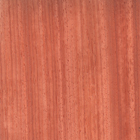
PADUK – AFRICAN PADUK
| Trade Names: | Padauk, African Corail. African Padauk. |
| Similar Woods: | Asian Padauk. |
| Origin: | Africa. |
| Range: | West Africa, Nigeria, Cameroon, Gabon, Congo, Zaire, Angola, lower tropical rain forests. Different from the Burma Padauk, the Asia Padauk, which is less common. |
| Uses: | Sliced veneer, construction lumber, shape-retaining frame-work for precision instruments, etc., architectural woodwork and inlay. It is most solely quarter cut and sliced. |
| Properties: | The heartwood is lustrous coral-red to red-brown, even orange-brown and most decorative. The flitches call for intensive cooking and the veneers must be completely covered when stored otherwise the wood quickly darkens. |
| Machining: | Padauk can be easily worked with both hand and machine tools. Tool blades are not dulled by crystalline deposits. |
| Seasoning: | Low shrinkage permits tensionless drying but this must be slow and controlled. |
| Finishing: | Due to its color and texture this species of wood is excellently suited for polishing. Ultraviolet resistant varnishes prevent the brilliant red wood from darkening down too quickly. |
| Jointing: | Glue joints are durable. Pre-drilling screw and nail joints is of advantage. |
paduk
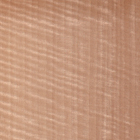
TANGANIKA FRISÈ – FIGURED ANEGRE
| Trade Names: | Figured Anegre. |
| Similar Woods: | Figured Maple. |
| Origin: | West Africa. |
| Range: | West and East Africa from Guinea through Sierra Leone, Ivory Coast, Ghana, Nigeria, Cameroon and the Congo to Angola, eastwards to Zaire and Uganda, tropical rain forests. Figured wood seldom occurs and thus is extremely difficult to obtain. |
| Uses: | For high quality architectural purposes, especially in the USA, Australia and Southeast Asia. Also used for musical instruments. Still used on a small scale in Europe. |
| Properties: | The figuring of Anegre is very pronounced and beautiful. As a result the veneers are extremely decorative, especially in conjunction with the silky luster and when the figuring occurs at a 90’ angle. |
| Machining: | There is no great problem to working this wood but tools become quickly dull due to silicate deposits. |
| Seasoning: | There is no great difficulty in drying cut lumber. The wood should be dried as soon as possible after cutting to prevent blue stain. |
| Finishing: | Surface treatment is possible by all the usual methods is possible but white patches can appear on the surface as a result of calcium deposits. |
| Jointing: | Gluing presents no problem. Nail and screw joints should be pre-drilled to prevent splitting. |
tanganika frisè

WENGE
| Trade Names: | Wenge. |
| Similar Woods: | Panga Panga. |
| Origin: | Africa. |
| Range: | West Africa, Cameroon, Gabon, Congo, Zaire, concentrated between Stanley Pool and Kiwu, in the Province of Equator and around Kisantu. |
| Uses: | Valuable veneer wood, specially used as slicing wood for face veneer with close veins. Architectural wood for furniture, panelling and parquet flooring lumber. Generally cut halfround on the staylog. |
| Properties: | The heartwood is two-coloured light brown, later darkening to coffee brown to black-violet, similar to Rosewood. Has to be intensively cooked and sliced hot. The heartwood is most resistant to fungi, insect attack and the weather. |
| Machining: | Despite its hardness Wenge can still be worked well with all tools but this calls for considerable power. |
| Seasoning: | Drying is very slow and only when properly controlled is there little risk of dry checking. Stability is very good in dried state. |
| Finishing: | Due to its coarse pore texture and parenchyma band deposits this wood is difficult to varnish. Best suitable are DD and PU varnishes at a wood moisture content not in excess of 12%. |
| Jointing: | Gluing is rather difficult. Casein and synthetic resin glues have proved successful. Screw and nail joints should be pre-drilled. |
wenge

ZEBRANO – ZEBRAWOOD
| Trade Names: | Zebrawood, Zebrano, Zingana. |
| Similar Woods: | --- |
| Origin: | West Africa. |
| Range: | Cameroon, Gabon, Congo, Equatorial Guinea, lower tropical rain forest. |
| Uses: | Primarily sliced veneer, occasionally rotary cut for face veneer, used for furniture, luxury architectural woodwork, today used especially for dashboard paneling in the automobile industry. It is almost always quarter sliced. |
| Properties: | The heartwood is light grey yellow with distinct dark brown stripes. Greatly resistant to fungi, insect infestation (particular termites) and the weather. Zebrawood is extremely dependent on fashion trends although it is a very decorative wood. Degrading are the so-called “barbed-wire” lines which interrupt the black stripes. These effect the uniform appearance of the veneer. |
| Machining: | The wood works easily with all tools. Knife blades are not dulled by the mineral deposits. |
| Seasoning: | The wood must be very carefully dried at a controlled speed because it is very prone to checking and warping. |
| Finishing: | When free of resin, Zebrawood varnishes and polishes well. The resin content, if too high, should be washed out before finishing. |
| Jointing: | Zebrawood is not particularly difficult to glue. Joints with nails and screwa should be pre-drilled. |
zebrano

